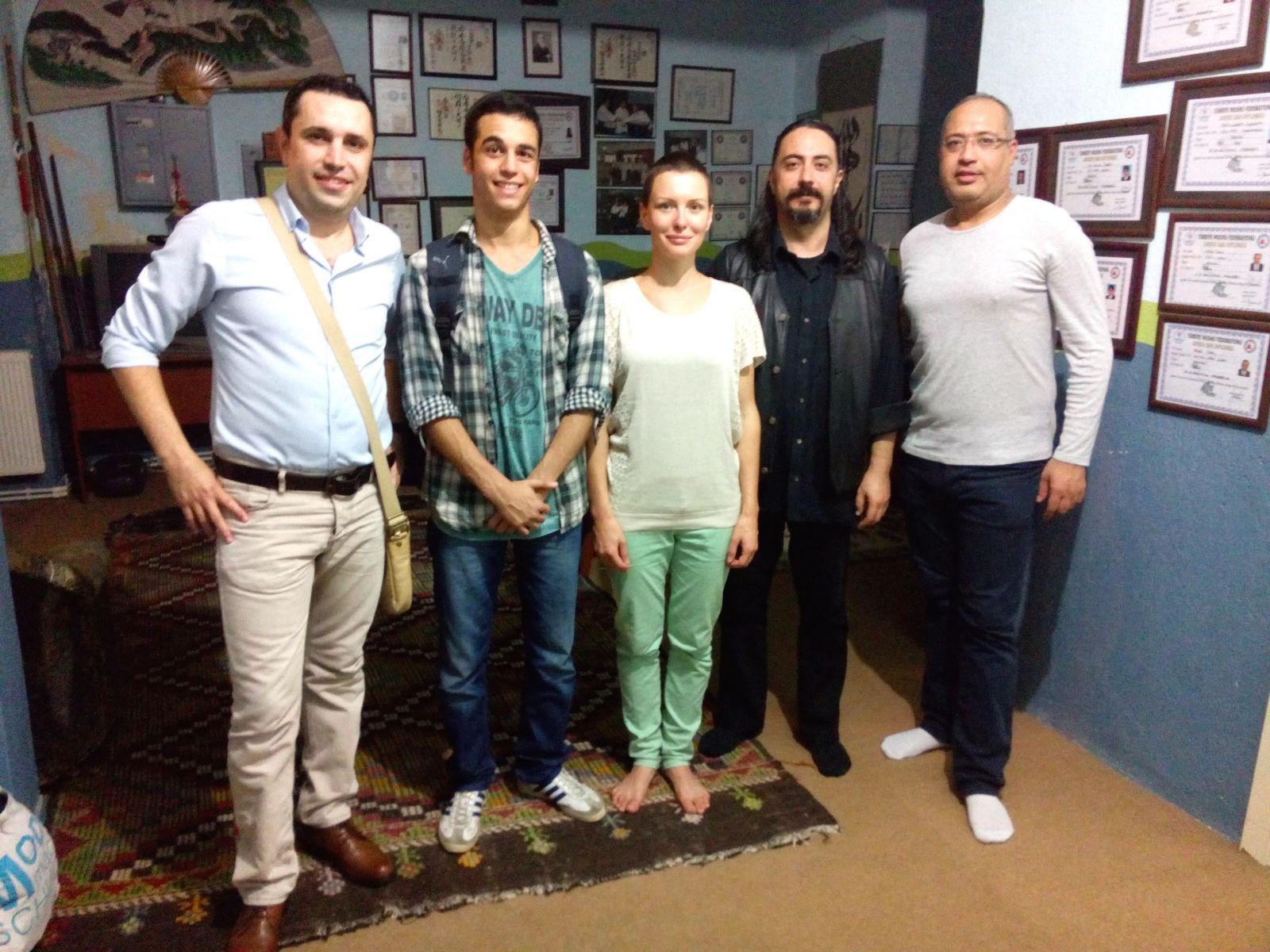I had hardly ever heard anything about finishing before I started developing MISOGI DOGI. This is surprising, since finishing is the paramount process in defining the quality of fabrics: for example, it’s because of the selected finishing process that your aikido uniform typically
- shrinks by 10% and more during the first laundry and sometimes more over time;
- is very stiff when freshly purchased;
- is whiter than white.
In a finishing mill, freshly weaved fabrics are washed (to unwax), “grilled” (to burn away fluff), bleached and dyed, made water or fire proof, anti-static, wrinkle-free, softened and shrinked. The finishing makes it all! It’s a very subtle process where experience and expertise is key.
To make sure all my questions would be addressed properly, the director of the finishing department showed me around. Behind him and the sales ladies, you can see fabric rolls waiting to be finished. The organic fabrics are stored on a separate stack. To avoid any misunderstanding, the worksheets for organic fabrics are green while the ones for conventional are white.
Have you ever imagined a 30m long laundry machine? All the finishing machines are huge and look quite alike for an untrained eye. Can you imagine seven of them in one single hall? This was impressive! After seeing it, I understood why no weaving company would sell less than 500m of a fabric. 500m are already a very small quantity for the finishing giants, especially with regards to the special conditions required for organic fabrics:
Both conventional and organic fabrics are finished by the same machines. To avoid the organic fabrics to get in touch with toxic chemicals remaining from conventional treatment, the finishers have to clean all the machines with special care before processing a series of organic fabrics.
At the end, a controller scrutinizes each meter of fabric for errors. In a lab, tests are performed to check various quality aspects such as the fabric’s resistance to pilling and tearing. Then, the fabric is ready for shipping.
How are organic textiles finished?
Using large amounts of toxic chemicals, the finishing process counts amongst the most polluting industries. Together with the farming methods, this is where organic cotton can make a real difference in environmental terms: GOTS certified textiles are finished using only mechanical and thermic processes, natural additives and harmless chemicals.
Although organic fabrics are made with environmental friendly methods, their market share is so small yet that they are, in most cases, made by conventional mills alongside conventional fabrics. Thus, waste water treatment is an issue. Our finishing mill is situated in an industrial area with a common state-run sewage works, unfortunately out of the scope of my interlocutors. Questions remain for the future…
My day ended with a wonderful training with the Aikido Club of Denizli. What a pleasure to have such a global practice enabling us to find friends wherever we go!